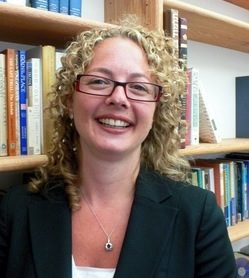Women in the Rabbinate
 Rabbi Esther Lederman came to speak to Dr. Maggie’ Kirsh’s class, Sexuality, Women and Family in Judaism. Working for the Union for Reform Judaism, Lederman began her lecture with an article about controversy with Woman's Day Mag. The magazine, clearly targeted towards women, hired a male rabbi in residence to write a monthly column. This lack of representation - that even extends to a magazine for women - is the main topic of Lederman’s discussion. Rabbi Lederman outlined the history of female rabbis, which began in the 1930s with Regina Jonas, a hidden figure in Judaism. Rabbi Lederman’s focus then shifted to the life of Sally J. Priesand who was ordained amongst her male counterparts and became the first female rabbi in America in 1972. Yet, she did not easily get a job, proving the need for representation and fight for female rabbis in rabbinical study. Framing her lecture around the voices of female rabbis, Lederman played podcasts discussing the pressures felt from being a minority. Sally Priesand, however, states that she takes comfort in knowing that she has opened doors and allowed young women to reach towards rabbinical study. Following this uplifting section, Lederman discussed modern iterations of support networks for female rabbis.
Rabbi Esther Lederman came to speak to Dr. Maggie’ Kirsh’s class, Sexuality, Women and Family in Judaism. Working for the Union for Reform Judaism, Lederman began her lecture with an article about controversy with Woman's Day Mag. The magazine, clearly targeted towards women, hired a male rabbi in residence to write a monthly column. This lack of representation - that even extends to a magazine for women - is the main topic of Lederman’s discussion. Rabbi Lederman outlined the history of female rabbis, which began in the 1930s with Regina Jonas, a hidden figure in Judaism. Rabbi Lederman’s focus then shifted to the life of Sally J. Priesand who was ordained amongst her male counterparts and became the first female rabbi in America in 1972. Yet, she did not easily get a job, proving the need for representation and fight for female rabbis in rabbinical study. Framing her lecture around the voices of female rabbis, Lederman played podcasts discussing the pressures felt from being a minority. Sally Priesand, however, states that she takes comfort in knowing that she has opened doors and allowed young women to reach towards rabbinical study. Following this uplifting section, Lederman discussed modern iterations of support networks for female rabbis.
For example, the Women’s Rabbinic Network, an organization for those in Reform Judaism, has chosen to expand its language and works towards rabbis of colors and LGBTQ rabbis. Its expansion is in light of multiple moments in which the need for support was exemplified. The #MeToo movement sparked many emotions, and rabbis across the country shared their experiences within the movement. The lack of help and support clearly proved that these organizations were needed. In a final question and answer section, Rabbi Lederman spoke openly about problems and troubling cases that have arisen in the previous years, namely three investigations into sexual misconduct within the Reform movement. Lederman herself stated that these whisperings were not surprising but still hurtful all the same.
Including more diverse rabbis and raising difficult topics in sermons may not erase the problems facing the Reform movement, but such initiatives empower communities to speak out and discuss issues complicating their lives. In total, Lederman exemplified the need for not just female rabbis, but multi-identity rabbis that reflected the complexities of the present day.














